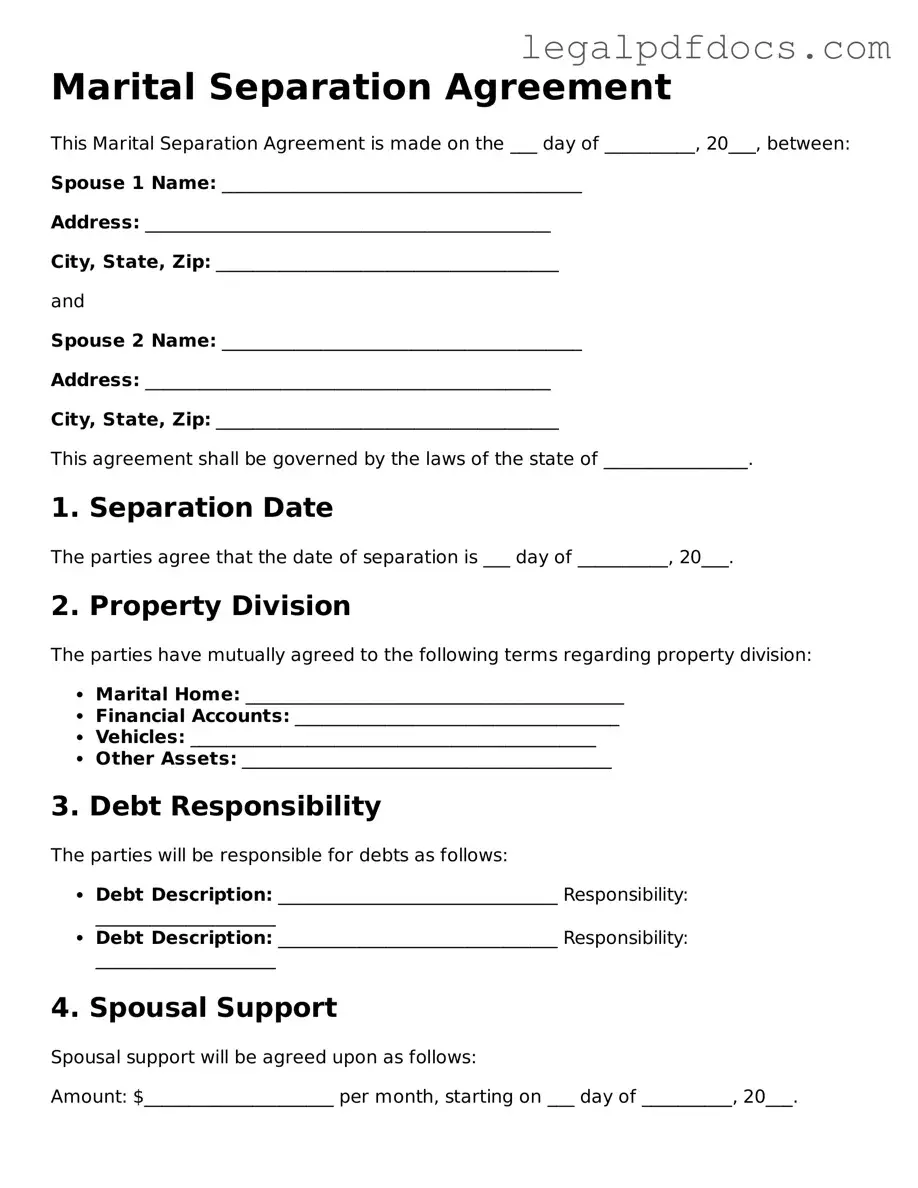Marital Separation Agreement Template
A Marital Separation Agreement is a legal document that outlines the terms and conditions agreed upon by spouses who are separating but not yet divorced. This form addresses issues such as asset division, child custody, and support obligations, ensuring both parties have a clear understanding of their rights and responsibilities. To create your own Marital Separation Agreement, fill out the form by clicking the button below.
Open Marital Separation Agreement Editor Here
